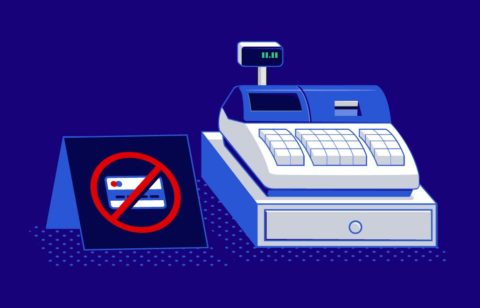According to the National Bureau of Economic Research, 29% of credit card holders pay exactly or close to (i.e. within $50 of) the minimum in most months. The remainder either pay in full most of the time or make a mix of intermediate payment amounts.
If you’re covering the minimum, you’re probably paying more in credit card interest than the original price of each item. Many people find themselves in this sticky situation because this is what happens if you’ve been carrying balances forward and making only minimum payments.
The simple explanation is that the card issuer has added its interest charges to your principal, which is the amount you originally borrowed. So, your debt grows at a rapid pace.
How compound interest works
If you’re paying 10% interest on a $100 credit card balance, you’ll be charged $10 the first month. With compound interest that $10 will be added to your original debt so that you now owe $110. The following month’s credit card bill will include the $10 interest, so you now owe $121. Imagine how much you’ll owe if this continues over an extended period! Or you can use this calculator to see the true cost of all your combined debt.
Paying interest on your interest
If you don’t pay off your balances in full each month, you’ll be paying interest on your interest charges. After a few years, you could end up paying two, three, or even four times more than what you originally borrowed – thanks to compound interest.
People with multiple high-interest credit card balances often turn to debt relief programs to pay their way out of this pickle.
Debt settlement for financial relief
You might have heard of debt settlement also referred to as debt relief. That’s because they are one and the same.
Debt settlement is the only way to reduce your debt as opposed to transferring it to another loan or credit card. Your debt is negotiated down by a specialist, and you pay less than you owe. The creditor forgives the remaining balance in a transaction called a settlement. A good debt settlement company can reduce their client’s debt to a fraction of what they owe and shorten the payment terms.
Debt consolidation
Debt consolidation falls under the debt relief umbrella and refers to taking out a new loan to pay off multiple debts. Those debts are combined into a single loan, usually with more favorable terms like a lower interest rate and a reduced monthly payment amount. Another plus is that you’ll no longer juggle multiple payments. Debt consolidation is a popular option for people who are saddled with credit card debt.
So how does debt consolidation work? Once you contract with a debt settlement company like National Debt Relief, you’ll no longer be required to make those credit card payments. Instead, you’ll deposit one monthly payment to an FDIC-insured account in your name. As your account grows and covers what you owe a creditor, the company will negotiate with that company. Once they reach a settlement, they will ask your permission to make a lump sum payment to that creditor. This process continues until you’re debt-free, which typically takes as little as 24-48.
Bankruptcy has lifelong consequences
Some people might think that with bankruptcy, you legally declare that you can’t make your payments, and poof, your debt disappears. In some ways, that might be true. But certain debts aren’t included in the bankruptcy.
This makes it virtually impossible for you to get new credit at a reasonable interest rate if you’re approved at all. Your insurance premiums will likely go up and it could even prevent you from renting or buying a home. Many employers now routinely check a prospective employee’s credit history, so bankruptcy could even keep you from getting a job!
If you’re drowning in credit card debt with high-interest charges, there is hope. And there is help.







